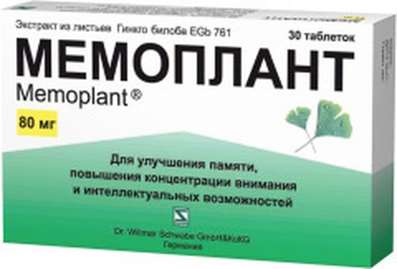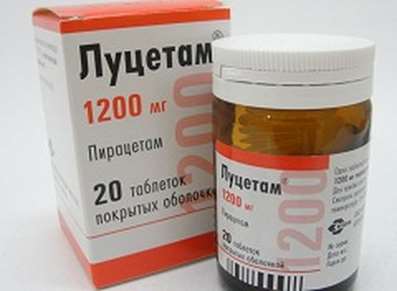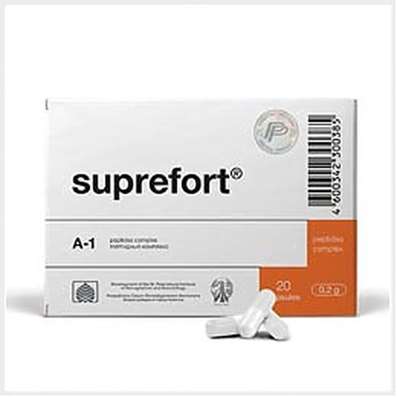Instruction for use: Phosphalugel
I want this, give me price
Active substance Aluminium phosphate
ATX Code A02AB03 Aluminium phosphate
Pharmacological group
Antacids
Nosological classification (ICD-10)
A05.9 Bacterial food poisoning, unspecified
Bacterial intoxication, Diarrhea with food intoxication, Acute diarrhea in food poisoning, Nutritional intoxication, Food poisoning, Foodborne diseases, Toxic food insecticide, Toxic diarrhea
K21 Gastroesophageal reflux
Biliary reflux esophagitis, gastrocardiac syndrome, Gastroesophageal reflux disease, Gastro-oesophageal reflux disease, Non-erosive reflux disease, syndrome gastrocardiac, Remhelda syndrome, Erosive reflux esophagitis, Ulcerative reflux esophagitis
K25 Gastric ulcer
Helicobacter pylori, Pain syndrome in gastric ulcer, Pain syndrome in gastric ulcer and duodenal ulcer, Inflammation of the gastric mucosa, Inflammation of the gastrointestinal mucosa, Benign gastric ulcer, The disease of the stomach and duodenum, asotsiirovannoe with Helicobacter pylori, Aggravation gastroduodenita on the background of peptic ulcer, Exacerbation of peptic ulcer, The aggravation of gastric ulcer, The organic gastrointestinal disease, Peptic ulcer of the stomach and duodenum, Postoperative gastric ulcer, Recurrent ulcers, Symptomatic gastric ulcers, Chronic inflammatory disease of the upper gastrointestinal tract, associated with Helicobacter pylori, Helicobacter pylori eradication, Erosive and ulcerative lesions of the stomach, Erosive lesions of the stomach, The erosion of the gastric mucosa, Peptic ulcer disease, Stomach ulcer, Gastric lesion, Ulcerative lesions of the stomach, Symptomatic ulcers of the stomach and duodenum
K26 Duodenal Ulcer
Pain with duodenal ulcer, Pain syndrome in gastric ulcer and duodenal ulcer, The disease of the stomach and duodenum, asotsiirovannoe with Helicobacter pylori, Exacerbation of peptic ulcer, The worsening of duodenal ulcer, Peptic ulcer of the stomach and duodenum, Relapse of duodenal ulcers, Symptomatic ulcers of the stomach and duodenum, Helicobacter pylori eradication, Erosive and ulcerative lesions of the duodenum, Erosive-ulcerative lesions of duodenal ulcers associated with Helicobacter pylori, Erosive lesions of the duodenum, Duodenal ulcer, Ulcerative lesions of the duodenum]
K29.6.1 * Gastritis is hyperacid
Gastritis with high acidity, Hyperacid gastritis, Pain in acute gastritis with high acidity, Gastritis with increased secretory function, Gastritis chronic hypersecretory, Hyperacid gastritis
K30 Dyspepsia
Fermentation dyspepsia, Hyperacid indigestion, Putrefactive indigestion, Dyspepsia, Dyspepsia, Dyspepsia of nervous origin, Dyspepsia in pregnant women, Dyspepsia fermentation, Dyspepsia putrefactive, Dyspepsia medication, Dyspepsia due to diseases of the digestive system, Dyspepsia due to impaired motility of the gastrointestinal tract, Dyspepsia due to unusual food or overeating, Dyspeptic phenomena during pregnancy, Dyspeptic Syndrome, Gastric indigestion, Delayed emptying of the stomach, Delayed digestion, Idiopathic indigestion, Acid dyspepsia, Disturbance of the upper GI tract motility, Indigestion, Nervous indigestion, Non-ulcer dyspepsia, The feeling of heaviness in the stomach after eating, Postprandial functional dyspepsia, The processes of fermentation in the intestine, Stomach upset, Gastrointestinal disorders, Digestive disorders, Disorders from the digestive tract, Stomach upset, Indigestion disorder, Indigestion in infants, Symptoms of dyspepsia, The syndrome of putrefactive dyspepsia, Syndrome of putrefactive dyspepsia in infants, Syndrome of insufficiency of digestion, Syndrome of nonulcer dyspepsia, Toxic indigestion, Functional dyspepsia, Functional indigestion, Chronic indigestion, Chronic episodes of dyspepsia, Essential dyspepsia, Dyspeptic disorder
K31.8.2 * Hyperacidity of gastric juice
Pathological hypersecretion, Hyperacid indigestion, Hyperadic states, Increased secretion of gastric juice, Increased acid formation, Hyperacidosis,Hyper secretion of gastric juice, Increased acidity of gastric juice, High acidity
K44 Diaphragmatic hernia
Herniated aperture, Hernia of the esophageal opening of the diaphragm, Hiatal hernia
K59.1 Functional diarrhea
Diarrheal syndrome, Diarrhea, Diarrhea with prolonged enteral feeding through the probem, Prolonged diarrheam Nonspecific diarrhea, Acute diarrhea, Diarrhea, Syndrome of diarrhea, Functional diarrhea, Chronic diarrhea, Diarrhea with an electrolyte balance disorder, Chronic diarrhea, Diarrhea of non-infectious genesis, Diarrhea after a gastroectomy, Diarrhea in children, Persistent diarrhea, Diarrhea (diarrhea), Enterocolitis of non-infectious origin
T50.9 Other and unspecified drugs, medicines and biological substances
Poisoning by cauterizing fluidsá Correction of side effects of drugs, Drug intoxication, Medication intoxication, Acute drug poisoning, Acute drug poisoning, Acute poisoning with potent and toxic substances, Poisoning with medicines, Oxalate poisoning, Poisoning by potent and poisonous substances, Poisoning with iodine preparations
T51 Toxic effect of alcohol
Intoxication alcoholic, Alcohol intoxication, Intoxication with alcohol, Acute alcohol intoxication, Chronic alcohol intoxication
T54 Toxic effect of corrosive substances
T65.8.0 * Radionuclide Intoxication
Y57.9 Adverse reactions in the therapeutic use of medicinal products and medicines, unspecified
Allergic drug reactions, Allergic reactions to drugs, Allergic reactions to medication, Allergic reactions to taking drugs, Allergic reactions to reception of radiocontrast agents, Allergic reactions due to medication, Anaphylactic reactions to medications, Anaphylactic reactions to taking drugs, Hepatotoxic effect of drugs, Idiosyncrasy to drugs, Idiosyncrasy toxic, Drug addiction, Drug-induced leukopenia, Drug-induced liver damage, Medicinal damage of the lungs, Acute allergic reaction to drugs, Toxic reactions to medicinal substances, Allergy medication, Hepatotoxic substances, Diarrhea medication, Drug fever, Medicinal intolerance, Undesirable effects of drugs
Composition and form of release
Gel for oral administration (sachets of 16 g) 1 pack.
aluminum phosphate 10.4 g
sorbitol 70% 4.48 g
agar-agar 0.0448 g
pectin 0.0872 g
calcium sulfate 0.0117 g
potassium sorbate 0.0402 g
orange flavoring 0.08 g
water purified to 16 g
in the box 20 or 26 pcs.
Gel for oral administration (bags of 20 g) 1 pack.
aluminum phosphate 12.38 g
sorbitol 70% 4.2857 g
agar-agar 0.08 g
pectin 0.1 g
calcium sulfate 0.01 g
potassium sorbate 0.0530 g
orange flavoring 0.032 g
water purified to 20 g
in the box 20 or 26 pcs.
Description of dosage form
White or almost white homogeneous gel, sweet taste, with a taste and smell of orange.
pharmachologic effect
Pharmacological action - adsorbent, enveloping, antacid.
Pharmacodynamics
Has acid-neutralizing, enveloping, adsorbing action. Reduces the proteolytic activity of pepsin. It does not cause alkalization of the gastric juice, keeping the acidity of the gastric contents at the physiological level. Does not lead to secondary hypersecretion of hydrochloric acid.
Forms a protective layer on the mucosa of the gastrointestinal tract.
Promotes the removal of toxins, gases and microorganisms throughout the digestive tract, normalizes the passage of contents through the intestine.
Indication
For adults:
peptic ulcer of the stomach and duodenum;
gastritis with normal or increased secretory function;
diaphragmatic hernia;
reflux esophagitis;
syndrome of nonulcer dyspepsia;
functional diarrhea;
gastric and intestinal disorders caused by intoxication, medication, irritants (acid, alkali), alcohol.
For children:
esophagitis;
gastroesophageal reflux;
gastritis;
peptic ulcer of the stomach and duodenum.
Contraindications
hypersensitivity to the drug;
severe renal dysfunction.
pregnancy and lactation
It is possible to use during pregnancy and during breastfeeding according to indications, in therapeutic doses.
Side effects
Constipation (rarely, mainly in elderly people and bedridden patients).
Interaction
Antibiotics of the tetracycline group, iron preparations, cardiac glycosides should be taken no earlier than 2 hours after taking Phosphalugel .
Dosing and Administration
Inside, you can in a pure form or before taking a dilute in half a glass of water. Adults and children over 6 years of age - 1-2 packs. 2-3 times a day; with gastroesophageal reflux, diaphragmatic hernia - immediately after meals and at night; with peptic ulcer of the stomach and duodenum - 1-2 hours after eating and immediately if pain occurs; with gastritis and dyspepsia - before eating; with functional diseases of the colon - in the morning on an empty stomach and at night. Reception of the drug is repeated if pain occurs in the intervals between doses.
Children: up to 6 months - 4 g (1/4 pack or 1 tsp) after each of 6 feedings; after 6 months - 8 g (1/2 pack or 2 tsp) after each of 4 feedings.
Overdose
Symptoms: suppression of motility of the gastrointestinal tract (due to the large number of aluminum ions).
Treatment: the appointment of laxatives.
Precautionary measures
Do not take the drug for a long time without prescribing a doctor. With caution apply in the presence of kidney disease, cirrhosis, severe heart failure. In elderly patients and patients with impaired renal function, when using Phosphalugel in the recommended doses, it is possible to increase the concentration of aluminum in the blood serum.
Antibiotics of the tetracycline group, iron preparations, cardiac glycosides should be taken no earlier than 2 hours after taking Phosphalugel .
It is possible to use the drug in therapeutic doses during pregnancy and lactation according to indications.
special instructions
For constipation, which is rare when taking Phosphalugel , it is recommended to increase the amount of daily consumed water.
The drug can be used for patients with diabetes mellitus; prophylactically to reduce the absorption of radioactive elements.
The use of Phosphalugel does not affect the results of X-ray examination.
When using Phosphalugel simultaneously with other medicines, you should consult a doctor, as Phosphalugel reduces the effectiveness of certain drugs.
storage Conditions
At a temperature of 15-25 ° C.
Keep out of the reach of children.
Shelf life
3 years.
Do not use after the expiry date printed on the package.

 Cart
Cart




